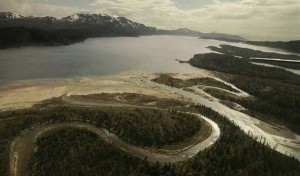Sounding the alarm on the possible impact of hypothetical mining — in spite of the fact that no permit application or specific plans have been submitted — the Environmental Protection Agency (EPA) has released a cursory review of the Bristol Bay Watershed in Alaska.
The EPA’s unprecedented early action is part of the agency’s effort to derail the development of one of the largest domestic deposits of key strategic mineral resources (Copper, Molybdenum, Gold, Silver and Rhenium) – the so-called Pebble Deposit in Southwestern Alaska.
While the project has not even entered the permitting process, EPA seems ready to hit the kill switch — preemptively vetoing the project before any application has been filed. Here are some key facts:
· While the U.S. is the world’s third-largest Copper producer, the related risk exposure to possible supply disruption is disproportionately greater than it is for any other mineral. On the national security front, the Pentagon has already reported a “significant delay” to a major weapons program due to inadequate copper supply.
· The unilateral expansion of EPA powers under section 404(c) of the Clean Water Act would effectively give the agency ultimate authority to derail any project in the United States that touches on water — with potential impact for projects in every sector of the US economy, from mining to farming, manufacturing, building, energy, and water treatment.
· The EPA has asserted this preemptive power before, and it has been rebuffed in Federal Court. In April, a District Court judge ruled that the EPA’s previous unilateral expansion of its authority to revoke permits already granted for a coal mining project in West Virginia was illegal. In issuing the ruling, the judge termed EPA’s argument for such an expansive power a case of “magical thinking.”
American Resources principal Dan McGroarty’s statement on the issue, which has already been picked up by various news outlets including the L.A. Times, the Chicago Tribune, the Miami Herald and the Kansas City Star, is as follows:
The EPA’s decision to conduct a premature watershed study on a mining project that has yet to enter the established permitting process is a dramatic expansion of the agency’s authority. When it comes to critical metals and minerals, the US is heavily dependent on foreign sources of supply. The EPA’s actions will have a chilling effect on domestic resource development, which will impact our national security, manufacturing competiveness, and ability to innovate.
The EPA’s action underscores the timeliness of a forthcoming study by the American Resources Policy Network entitled “Reviewing Risk: The American Resources Policy Network Report on Critical Metals and National Security,” which will be available at www.americanresources.org in June 2012.
For more information on Copper, one of the key minerals in the crosshairs of the EPA’s current action, visit www.coppermatters.org.





